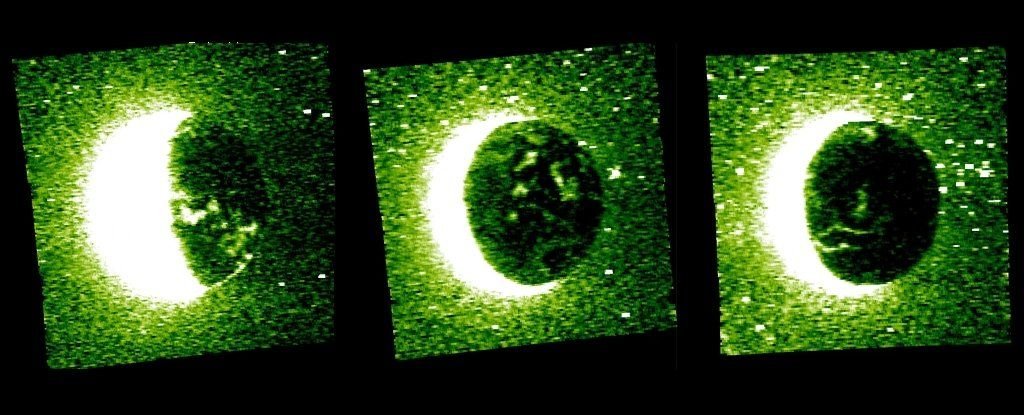Earth's auroras are a glorious wonder, but our planet isn't the only place in the Solar System where these phenomena can be found.
An atmospheric glow, albeit sometimes in invisible wavelengths, has been spotted at every planet except Mercury, and even some moons of Jupiter... and even a comet. But Mars is where it gets interesting. The red planet is famous for its lost global magnetic field, an ingredient that plays a crucial role in the formation of aurora elsewhere.
But that doesn't mean Mars is totally magnetism-free. Regions of localized magnetic fields sprout from some regions of the crust, particularly in the southern hemisphere. New analysis has confirmed that these small, local magnetic fields interact with the solar wind in interesting ways to produce Mars's discrete (or structured) ultraviolet auroras.
"We have the first detailed study looking at how solar wind conditions affect auroras on Mars," said physicist and astronomer Zachary Girazian of the University of Iowa.
"Our main finding is that inside the strong crustal field region, the aurora occurrence rate depends mostly on the orientation of the solar wind magnetic field, while outside the strong crustal field region, the occurrence rate depends mostly on the solar wind dynamic pressure."
Here on Earth, we have a pretty good handle of how auroras – borealis and australis – happen. They appear when particles from the solar wind collide with Earth's magnetosphere, and are then accelerated along the lines of the magnetic field to high latitudes, where they rain down into the upper atmosphere.
There, they interact with atmospheric particles to produce the shimmering lights that dance across the sky.
Evidence suggests that the phenomena form in similar ways on other bodies. For instance, Jupiter's powerful, permanent auroras are also facilitated by the enormous planet's complex magnetic field.
But Mars's global magnetic field decayed fairly early on in the planet's history, leaving behind only patches of magnetism preserved in magnetized minerals in the crust. Ultraviolet images of Mars at night have revealed that auroras tend to form near these crustal magnetic fields, which makes sense if magnetic field lines are required for particle acceleration.
Girazian and his team's work also takes into account the solar wind conditions. They analyzed data from the Mars Atmosphere and Volatile EvolutioN (MAVEN) spacecraft, which has been collecting ultraviolet images of the red planet since 2014. It's also equipped with an instrument called the Solar Wind Ion Analyzer, which, unsurprisingly, analyzes the solar wind.
They compared data on the dynamic pressure of the solar wind, as well as the strength and angle of the interplanetary magnetic field, with ultraviolet data on the Martian auroras. They found that, outside the crustal magnetic field regions, the dynamic pressure of the solar wind plays a significant role in the detection frequency of auroras.
However, the pressure of the solar wind seems to play little role in the brightness of said auroras. This suggests that space weather events, such as coronal mass ejections, where masses of charged particles are ejected from the Sun and are associated with higher solar wind pressure, may trigger Martian auroras.
Inside the crustal magnetic field regions, the orientation of the magnetic field and the solar wind seems to play a significant role in the formation of auroras on Mars. At certain orientations, the solar wind seems to be favorable to the magnetic reconnection events or particle acceleration required to produce the ultraviolet glow.
These results, the researchers said, reveal new information on how interactions with the solar wind can generate auroras on a planet stripped of its global magnetic field. This information can be used to help better understand the formation of discrete auroras on very different worlds.
"Now is a very fruitful and exciting time for researching aurora at Mars," Girazian said.
"The database of discrete aurora observations we have from MAVEN is the first of its kind, allowing us to understand basic features of the aurora for the first time."
The research has been published in the Journal of Geophysical Research: Space Physics.
- Karlston and Kaos
-

 2
2



Recommended Comments
There are no comments to display.
Join the conversation
You can post now and register later. If you have an account, sign in now to post with your account.
Note: Your post will require moderator approval before it will be visible.